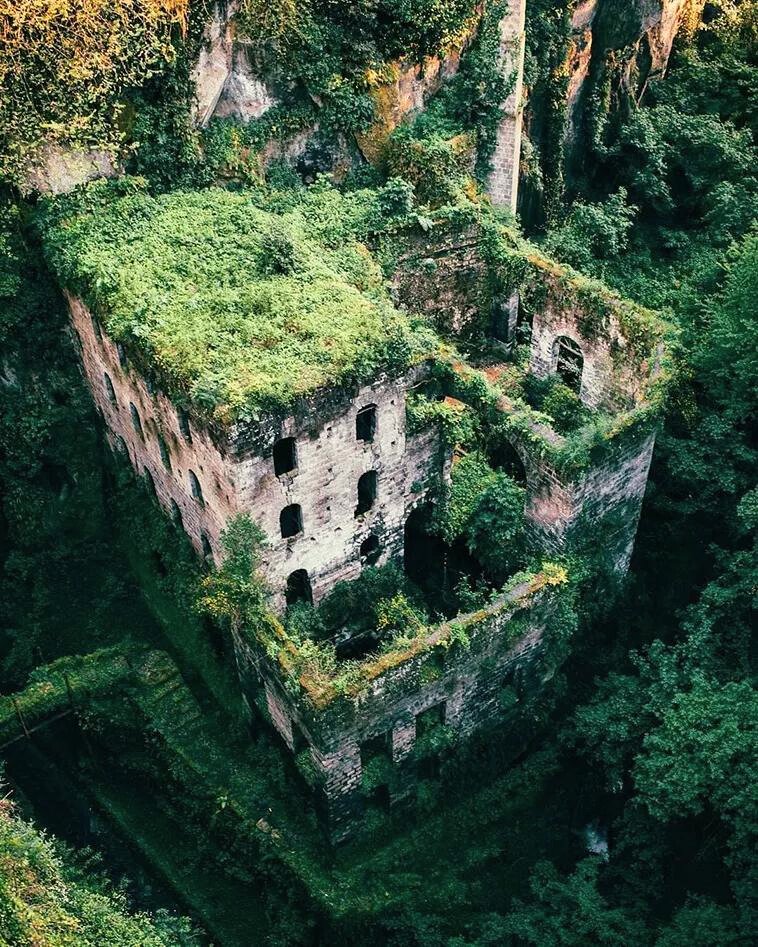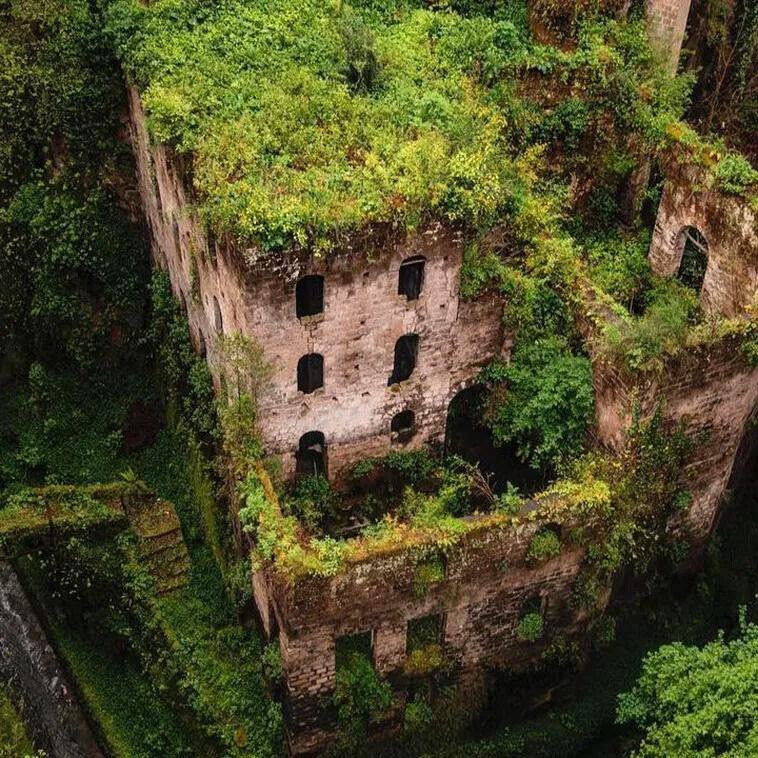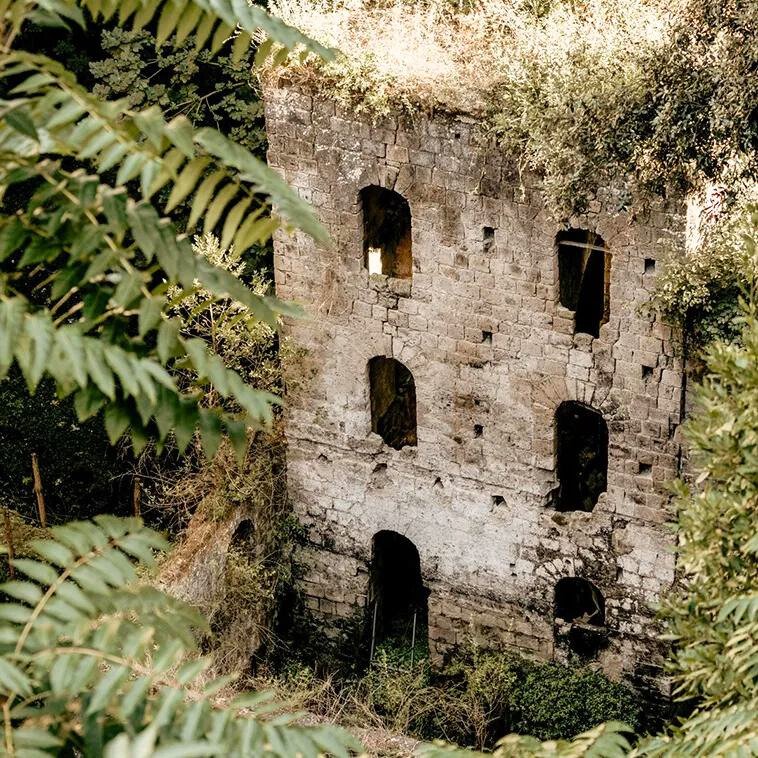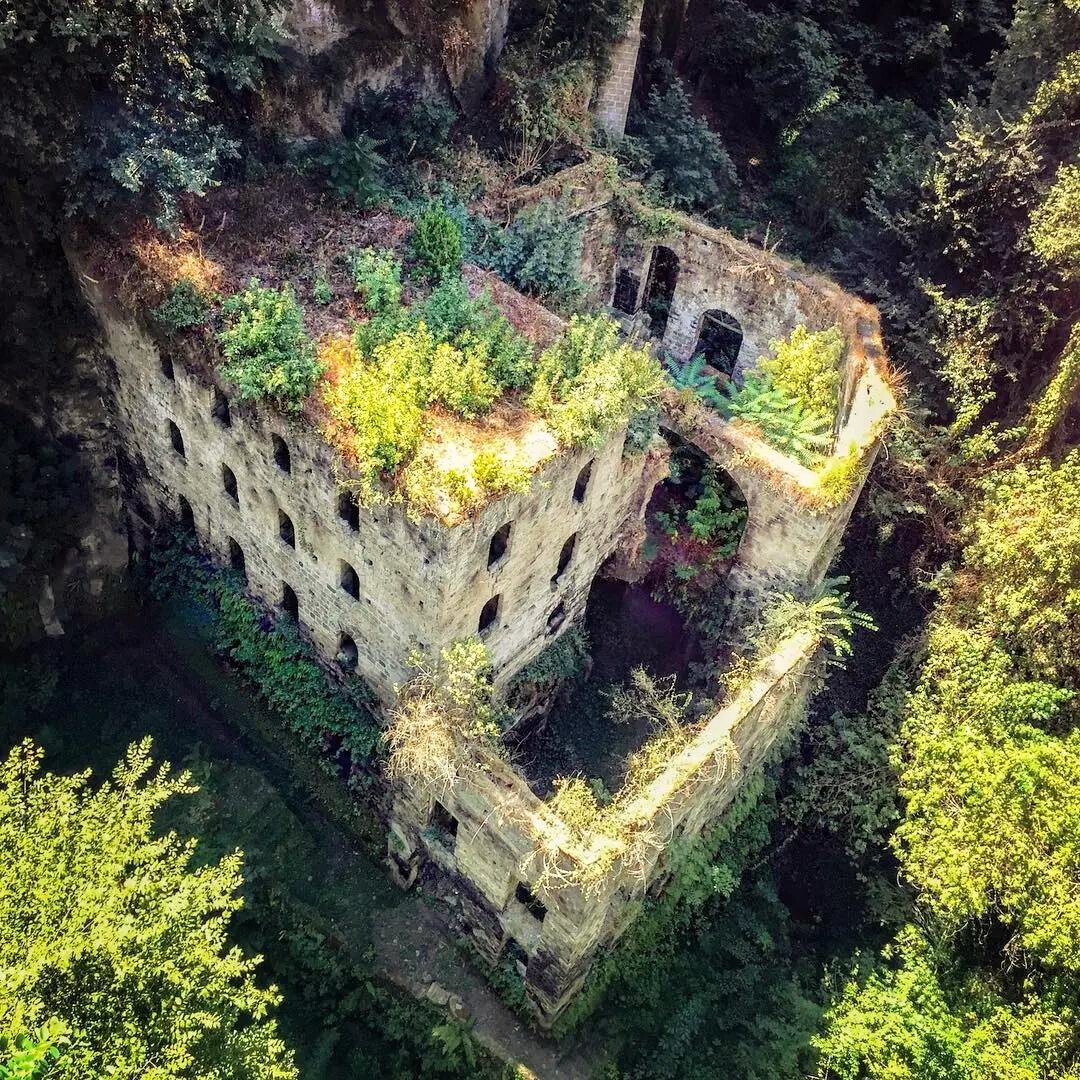Vallone dei Mullini, nestled in the heart of Sorrento, Italy, is a captivating crevasse where nature has triumphantly reclaimed what once belonged to humanity. Translated as the “Valley of the Mills,” this hidden gem tells a story of civilization’s rise and fall, where the relentless forces of nature are gradually consuming the remnants of human industry.

The origins of Vallone dei Mullini date back around 35,000 years to a time of immense geological upheaval. An explosive eruption from the Flegreian Plains, a vast volcanic field near modern-day Naples, violently reshaped the landscape, carving out the deep crevasse that would later become the valley. Over thousands of years, volcanic debris and the continuous flow of two small streams—Casarlano and Sant’Antonino—sculpted the terrain, creating an environment ideally suited for the establishment of mills.

During the Middle Ages, Vallone dei Mullini flourished as a hub of industrial activity. Flour mills were the first structures to emerge, constructed from local stone and strategically placed to harness the power of the streams below. These mills played a crucial role in grinding grain for the local population, driving the economy of Sorrento. The success of these mills led to further industrial development within the valley. A sawmill was built to process timber, taking advantage of the abundant water supply, and a washhouse was established to serve the needs of the townspeople. These buildings, while functional, were crafted with a rugged elegance that blended seamlessly with the wild, verdant surroundings of the valley.

For centuries, Vallone dei Mullini thrived, and its mills and other industrial outfits provided essential services to the community. The constant flow of water ensured a reliable source of energy, and the secluded nature of the crevasse offered protection from the elements. However, as the world transitioned into the modern era, the valley’s fortunes began to wane. Economic shifts, technological advancements, and the emergence of new industries led to the gradual decline of the mills. The once-bustling valley grew increasingly quiet as, one by one, the mills, sawmill, and washhouse were abandoned.

The very environment that had once made Vallone dei Mullini an ideal industrial site also contributed to its decline. The crevasse’s high humidity, a natural consequence of the constant presence of water, made the buildings difficult to maintain. As the years passed, walls crumbled, roofs collapsed, and the valley’s industrial heart slowly decayed. Without human intervention, nature began to infringe upon the valley, reclaiming the land that had once been dominated by stone and machinery.

Today, Vallone dei Mullini stands as a poignant reminder of nature’s enduring power. The once-sturdy stone buildings are now shrouded in a thick layer of vegetation. Ferns, ivy, and mosses have taken root in the cracks of the old mills, their green tendrils weaving through windows and doorways, draping the walls in a living tapestry. The valley floor, once alive with the activity of millworkers, is now a lush, overgrown landscape where the boundaries between the artificial and the natural world have all but disappeared. The streams that once powered the mills continue to flow, but now they run through a realm where nature reigns supreme.

Vallone dei Mullini is more than just a picturesque ruin; it is a powerful symbol of the impermanence of human achievement. It stands as proof of nature’s power to reclaim and restore balance, reminding us that, ultimately, nature prevails. In a time when human impact on the environment is more apparent than ever, Vallone dei Mullini serves as both a warning and a source of inspiration. In this place, history and nature converge in a hauntingly beautiful way.

For those visiting Sorrento, Vallone dei Mullini presents a unique opportunity to journey into the past, where the traces of medieval industry persist, nestled within the verdant landscape. The valley, with its moss-covered ruins and vibrant plant life, invites reflection and reverence, urging us to consider the delicate balance between human ambition and the natural world. As nature continues its slow but steady takeover, Vallone dei Mullini stands as a living reminder that, ultimately, nature prevails.






